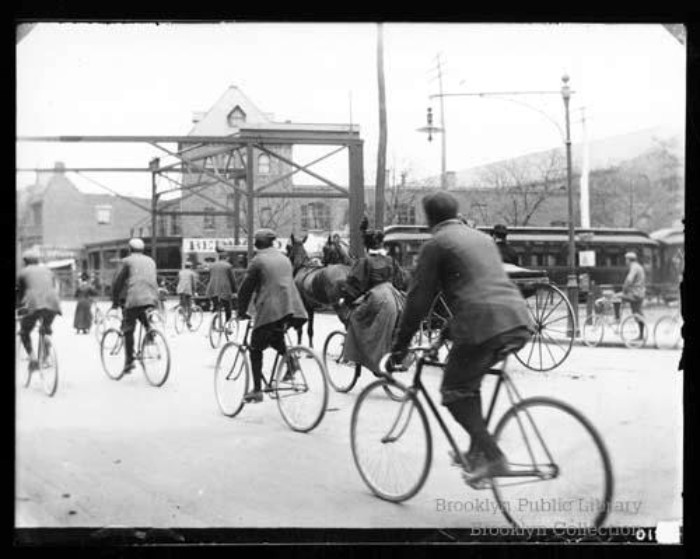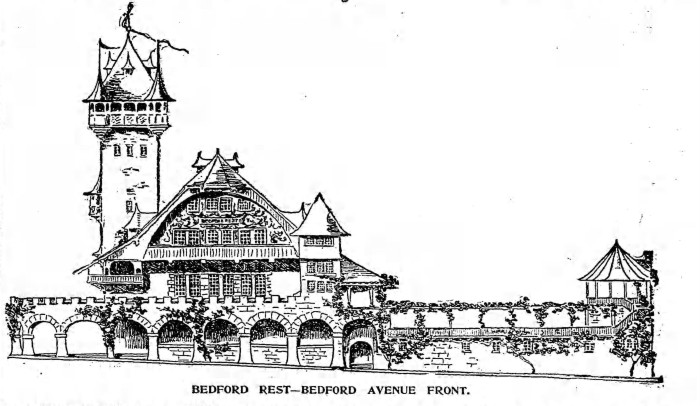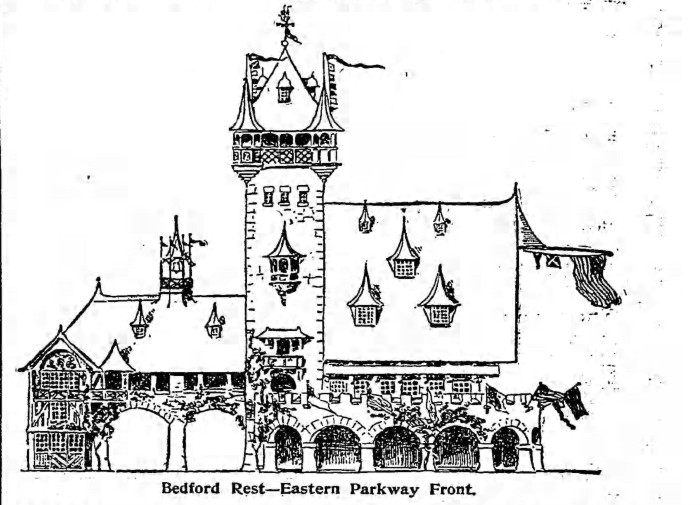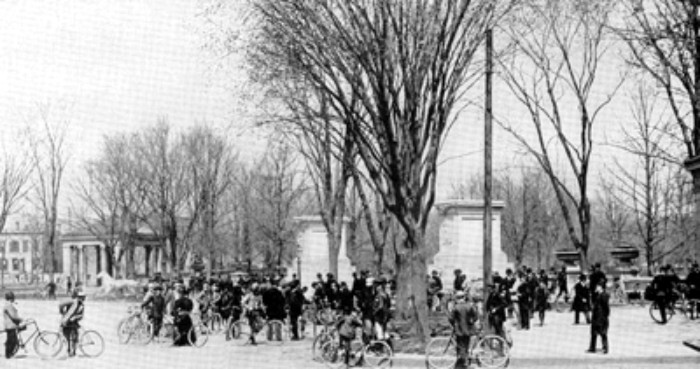Past and Present: The Bedford Rest, a Crown Heights Hub for Brooklyn's Cyclists
A look at Brooklyn, then and now. As the 20th century loomed before them, the middle class Victorians of Brooklyn found themselves with a new phenomenon on their hands — leisure time. Their ancestors never had too much of it, unless they were wealthy. Those below them on the economic scale wouldn’t have any for…
A look at Brooklyn, then and now.
As the 20th century loomed before them, the middle class Victorians of Brooklyn found themselves with a new phenomenon on their hands — leisure time. Their ancestors never had too much of it, unless they were wealthy. Those below them on the economic scale wouldn’t have any for a long time to come.
As it is again today, bicycling became the favored mode of transportation for those seeking fresh air. Individuals bicycled everywhere they could, and bicycle clubs formed, encompassing members of just about every group of people in the society.
Everyone liked to bike, and the “wheelmen,” (and wheelwomen) as they were called, took to the streets looking for nice long rides within the city. Soon, they began to look for places to stop and rest.
Cyclists at Bedford and Atlantic Avenues, 1896. Photo via New York Public Library
One of the favorite routes was along Bedford Avenue, Brooklyn’s longest street; a trip that took a rider from Greenpoint all the way through Brooklyn to Sheepshead Bay.
If you start in Northern Brooklyn, by the time you reach what is now Crown Heights, you realize that you’re climbing a hill. The hill’s apex is Eastern Parkway, at the top of the glacial terminal moraine that runs through the borough — along its way creating Highland Park, Prospect Hill and the hills of Green-Wood Cemetery.
Eastern Parkway was up and running by 1874, created by Olmsted & Vaux as a picturesque European-style promenade for horse and rider, coach and pedestrians.
The intersection of Bedford, the borough’s most important north/south road, and Eastern Parkway — traveling east to west, all on top of a hill — would be the most fortuitous place for someone to establish a rest stop and respite area.
So someone did. It was called the Bedford Rest.
Eastern Parkway at Bedford, undated. Photo via eBay
The Bedford Rest, (a great name, btw), first shows up in the newspapers in 1896. Three enterprising men named Frederick A. Reid, Joseph H. Colyer and Frederick Aldridge came up with the idea of erecting a large tented pavilion on the corner of Eastern Parkway and Bedford Avenue.
The tent, with brightly colored pennants flying, was a powerful lure for those puffing their way to the top of the moraine. The tent had a wooden floor and several rooms. The main room offered tables and chairs, a soda fountain and snacks and finger food.
In the back of the tent, they set up a bicycle repair booth, where, free of charge, one could get tires checked and filled, or have more dire problems fixed. You could also buy biking accessories like horns and caps.
It was genius. The Bedford Rest soon became the official and unofficial starting and finishing place for races and biking excursions. It became THE place to meet fellow biking enthusiasts, and to take a rest before continuing on to Coney Island, Prospect Park or Queens.
The owners realized they had a chance at permanent greatness here, and made plans to build a masonry building on the site, one that would be able to offer the same amenities and more. Much more.
Rendering in Brooklyn Eagle, 1896
The Brooklyn Eagle ran an extensive story on the Rest on June 21, 1896. They featured sketches of the site prepared by architect Joseph H. Taft. This was not going to just be a permanent building for the Bedford Rest; it was going to be a wonder.
The entrepreneurs planned a huge building that would take up the entire block of the western side of Bedford Avenue between Eastern Parkway and DeGraw Street (now Lincoln Place).
The design of the complex was based on the Oxenstrass, now the Park Hotel Vitznau, on Lake Lucerne, in Switzerland. It would be made of stone, and resemble a Swiss village, with a large turreted central towers, cute little dormers, and lots of Medieval-looking multi-paned windows. That was the Eastern Parkway side.
The Bedford side was the showstopper. Because of the grade of the hill, the building sloped down to the north, so the bulk of the building was near Eastern Parkway, to visually anchor the site. It featured three stories of stone magnificence.
A long arched loggia ran the length of the block and around the entire property. The southern part supported a restaurant and hotel, while the back part of the arch opened to a courtyard with a pergola and a balcony along the length of the structure. A small turreted gazebo stood at the end of the property.
The building would have a large courtyard in the center, completely enclosed by surrounding structures and the loggia. There, patrons could gather for biking trips, races or other sports gatherings.
The courtyard was going to be big enough to have a “water toboggan slide” and a pool for water polo. There would still be a large bicycle repair shop on the grounds, now in its own building.
The garden would be spacious, with a covered gallery, beautiful flora and hanging plants, lit at night by candelabras and chandeliers.
Rendering in Brooklyn Eagle, 1896
Guests would enter the main building on the Eastern Parkway side. A large dining room on the first floor would offer the finest in food and drink. A vaudeville hall would be upstairs, available for theater and musical events of all kinds.
The rest of the upstairs rooms would be taken up by hotel suites. The basement would have storage for bicycles, as well as a bowling alley, plunge pool and spa, complete with massage rooms and needle showers. This would all be especially useful for those recovering from long races and bike tours.
The new building would take several years to build, and was estimated to cost over $100,000.
In the meantime, business in the tent went on. For the next few years, the Bedford Rest remained at the heart of Brooklyn’s bike culture.
All kinds of groups met here. Races and bike trips started or ended here. Groups as disparate as the Kings County Wheelmen — a professional biking club — The American Legion of Honor Wheelmen’s Club, the Girls High School Riding Club, the Ladies Touring Club and dozens more biking groups all came here.
It sounded like a lovely place. In fact, the Bedford Rest might still do really well today. But all was not as it appeared. For one thing, as the next few years passed, no Swiss village was being built. The tent remained.
Continue Reading: Part 2
Cyclists at Park Circle, Prospect Park, 1896, via eBay















amazing! i can’t wait to read the rest. although i think i have a good idea of what might have happened, sadly.